"All animals are sentient beings... Whether they are domesticated or wild, utilized for food production, science, sport, entertainment, or any other purpose, they deserve freedom from suffering."
Animals - The Sentience
All facets of human-animal contact are affected by the question of animal sentience; if animals can feel, as we know many do, then both their physical and mental welfare requirements must be taken into consideration. This is crucial for laws, policies, and people's behavior pertaining to the welfare of animals.
The scientific community has determined that numerous animals, not simply mammals and birds, should be regarded as sentient. The unconventional study has revealed that fish can experience pain, contrary to the widely held belief that they cannot.
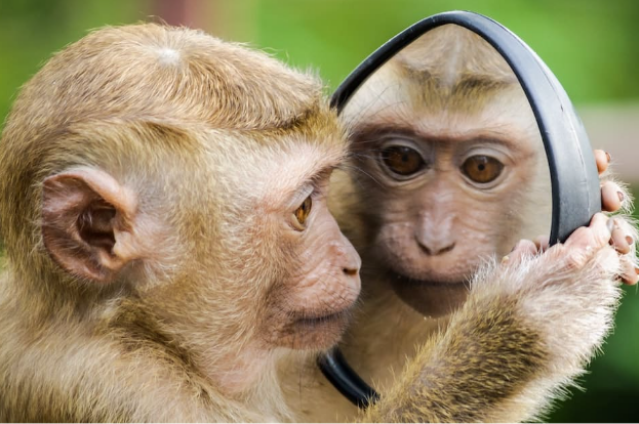
Many scientific investigations have provided evidence that a variety of animals are sentient creatures, which has contributed to our understanding of this concept. This indicates that they are capable of feeling both good and bad emotions, such as pleasure, joy, sadness, and misery, that are important to the person.
“It shall be the duty of every citizen of India to protect and improve the natural environment including forests, lakes, rivers, and wildlife, and to have compassion for living creatures.” - The Constitution of India Article 51A (g) Part IVA
The Animal Use and Cruelty
Compassion for all life was a sacred Dharma in India. The Buddha, Mahavira , saints and sages taught 'Ahimsa’ , the way of no harm to any living creature."
Animals contribute greatly to the rural industry. Animals suffer silently in our…
- Homes
- Streets
- Pounds
- Farms
- Dairies
- Laboratories
- Circuses
- Zoos
- Forests
1. Cruelty in the name of Vanity:
A pointless act of suffering motivated by vanity, animal experimentation is practiced in the beauty industry.
Pharmaceuticals and the cosmetics industry are only two of the many sectors that use animal testing. Personal care products including toothpaste, mouthwash, soap, perfume, and sunscreen are also considered cosmetics in Australia. Cosmetics also include all makeup, skincare, and haircare items.
Animals are nearly always put to death once their use as test subjects is through because pain treatment is not offered to them during the experimentation because it is believed to affect the outcomes. Animals may occasionally have their vocal cords removed during these experiments so that researchers won't have to hear their cries, and they are undoubtedly painful for the subjects.
- Facts:
- Globally, it is estimated that 500,000 animals suffer and pass away every year because of cosmetics. Hamsters, rats, mice, guinea pigs, rabbits, and other animals are among those who are in pain.
- Dogs can be used to test things that are comparable to cosmetics, such as topical skin treatments, cosmetic dentistry procedures, etc., even if they are not specifically used to evaluate makeup.
- Animals of all kinds, including cats, primates, pigs, reptiles, and many others, are employed in non-cosmetic investigations all around the world.
- Animals as Business:
When businesses wish to determine the safety of prospective new ingredients for cosmetics, skincare, or haircare products, they test them on animals. Tests are performed to determine whether a substance may cause cancer, birth abnormalities, or general sickness. The amount of a substance that an animal can be made to swallow before eventually passing away horribly is known as the "lethal dosage" and is sometimes tested by experimenters.
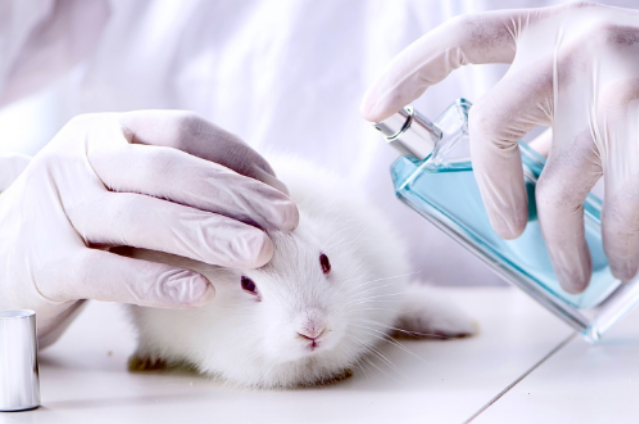
Animals in the cosmetic industry for testing
source: Wikipedia
2. Slaughter of Animals:
Animals are killed through the act of slaughter for human consumption, usually so that their flesh can be sold as meat. Each year, approximately 10 billion terrestrial animals and 47 billion aquatic species are butchered in the United States.
- How are animals killed?
On high-speed disassembly lines, slaughterhouse employees are hired to kill and butcher hundreds, if not thousands, of animals per hour. As an illustration, 2.33 broiler chickens can be processed every second. Bleeding is one typical way of slaughter. This entails slicing a neck animal's primary blood vessels with a knife or automatic blade (a process known as sticking). In the ideal situation, animals are stunned before being stuck and stay unconscious until they lose enough blood to pass away from a lack of oxygen to their brain. However, there is a chance that animals won't be properly stunned and will be awake when their throats are cut, as a slaughterhouse worker eloquently detailed to The Washington Post in 2001.

Slaughter of animals
Source: The Guardian
Salient Features for Humane Slaughter of Animals:
- One animal must not be killed in front of the other
- The animals must be stunned and completely unconscious before slaughter
- Proper training for all Slaughter House Employees (handlers, transporters, butchers, etc.) must be conducted.
- Only a trained, licensed butcher must be permitted to slaughter
Animal Care
Does handling animals matter that much?
Proper animal handling aids the handler in performing tasks required for the animal's care and health. It lessens anxiety for both the animal and the handler, lowers the risk of injury to the animal and the handler, and improves everyone's enjoyment of the interaction.
1. India is a signatory to the Universal Declaration of Animal Rights
The Five Freedoms are:
- Freedom from hunger and thirst
- Freedom from pain and discomfort
- Freedom from injury and disease
- Freedom to express normal patterns of behavior
- Freedom from fear and distress

2. Animals need to be kept in a safe space with the right ventilation, humidity, and temperature. A shelter for animals needs to be regularly examined, cleaned, and maintained.
3. The utilized machinery ought to be ethical.
4. Keep talking to animals.
- Take your pet into a peaceful area to start. You have an advantage over them because they are already aware of the tone of your voice.
- Sit down close to them on the floor. Or, you might have them sit close to you if they are permitted to use the couch or bed (lucky dog).
- Once they are comfortable, pet them in their preferred location and have a loving conversation with them.
- Use a single, concise phrase or word frequently. For instance, "That's it, sweetheart. That's it, sweetheart. That's it, sweetheart." (Alternatively, if you're a male and this sounds much too shite for you, say "I see, buddy. I see, friend ")
- Close your eyes and remain silent after repeating your key phrase approximately 10 times in a rhythmic manner.
- Stop caressing your dog and start imagining what you want them to understand. Animals like dogs and cats, as well as some of the larger mammals, may quickly take this up.
- Create an image of them doing it in your mind, combined with a vision of you scratching their favourite region thereafter, if you wish to ask them to put their head in your lap.
- If this is your first time using visualisation, you may need to practise a bit. Once the image is established and distinct, visualise it being encased in a fluffy, white cloud.
- Float the cloud picture out of your forehead where your third eye is located and into the dog's head directly between their eyes. One you've done that, repeat the key word once again while floating the cloud image back into their minds.
- Continue doing this until he or she either places their head on your lap or gets up and leaves.
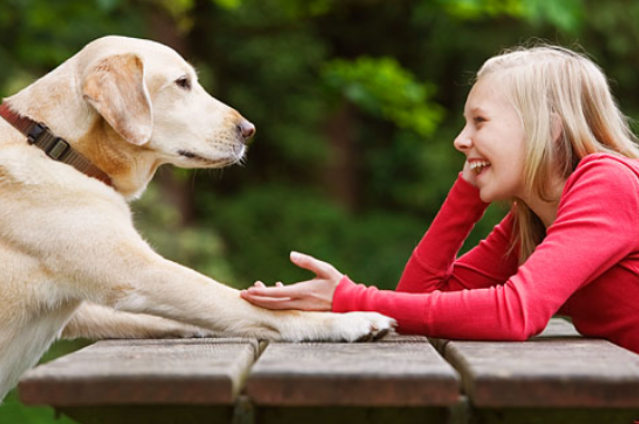
Animal Rescue
A small inspirational story:
A man exits a wedding celebration to rescue a drowning dog - "Guy went from a wedding celebration to help a dog" depicts a man in a business suit lending a helping hand to a dog that is about to drown. The viral video comes to an end when the man removes his overcoat, leans in to try to lift the animal to the ground, and, after a brief period of success, climbs the stairs to leave.
Government Acts towards Animals Welfare
Animal Welfare in modern India
1. Prevention of Cruelty to Animals Act, 1960
- Section 11 (a): Beating, kicking, driving too fast, carrying too much, torturing, or putting any animal through needless misery are all prohibited.
- Section 11 (1)b: Employing ill or aged animals for labor
- Section 289: Indian Penal Code Inconsiderate Treatment of an Animal
- Section 428, 429: Animal Killing or Animal Mauling: Up to 5 Years in Prison
- Section 503: Anyone who threatens someone who is caring for a stray animal is guilty of criminal intimidation and may be detained without a warrant.
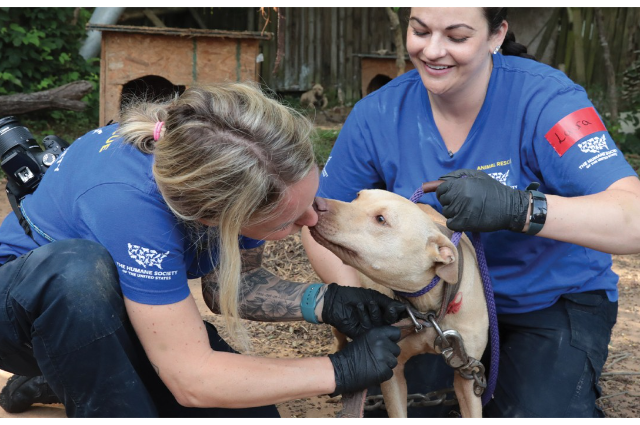
2. Prevention of Cruelty to Draught & Pack Animals Rules, 1965
- Section 6: Conditions for Use of Draught & Pack Animals
- Section 11: Rights of Police Officers
- Section 7: Disengagement of Animals after work
- Section 8: Prohibition of Use of Spiked Bits
- Section 9: Saddling of Horses
3. Wildlife Protection Act, 1972
- Schedules I,II,III & IV: List different protected species, the killing or trade of which is prohibited.
- Schedule VI: Lists protected plants
- Schedule I Offence : 6 years in prison + fine of Rs.25,000.
- Rules for protected areas
- Applicable all over India except J&K
- Hunting, capturing & trapping of wildlife is prohibited
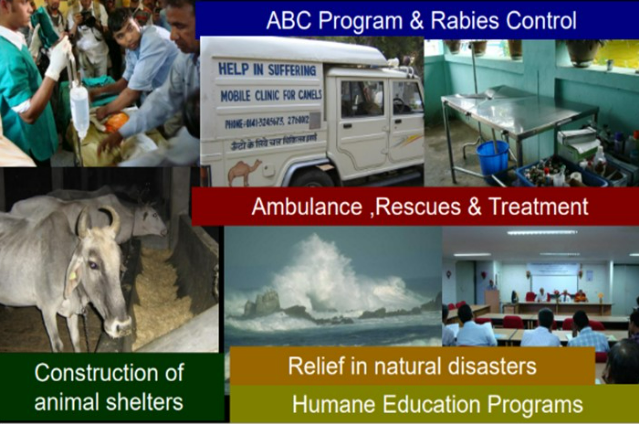
Humans towards the welfare of Animals
“The morality of a Nation is judged by the way its people treat their animals." - Mahatma GandhiThe next time you see common cruelties…
- Speak up for the animal!
- Call you local ANIMAL RESCUE SERVICE
What you can do….
Join a local animal welfare organization or launch a local animal welfare initiative.
- Deliver this speech in your neighborhood. Become a volunteer for the United Nations Convention on the Rights of Animals right now!
- Report sick or injured animals, donate to animal shelters and become knowledgeable about animal first aid.
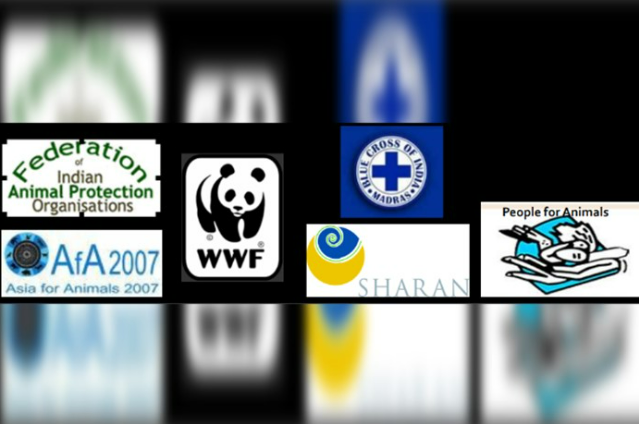
Social welfare organization
Source: wikipedia
Get actively involved!
Have stray animals in your area sterilized and rabies-vaccinated.
- Speak out against animal cruelty. Learn how to file police reports and gather evidence for prosecution.
- Speak out for animal rights!
- Initiative to stop widespread animal abuse
- Provide local wild birds and abandoned animals with food, drink, and shelter.
Be an informed and conscious Consumer
Make sure that animals are handled humanely.
- Always read the label before purchasing, using, or wearing anything.
- Use non-animal tested cosmetics.
- Consider being vegetarian or vegan for a week.
- Select options that haven't harmed animals, like Leather versus pleather
Promote adoption
Never purchase or breed when homeless animals are dying!
- Get a stray animal adopted from a shelter nearby.
- On birthdays and anniversaries, give money to support animals.
Practice to be Eco Friendly
Use non-toxic alternatives instead of poisons in the house and yard.
- Plant trees to provide food for nearby animals and birds.
- Recycle waste and refrain from using single-use plastics.
- Avoid plastic bags and water bottles by bringing your own.
Conclusion
We are currently experiencing the greatest extinction of species experienced by mankind in the history of the planet. Let's make the change since living in harmony with our animal friends is essential to our survival. Fundamentally, we are a compassionate species.
. . .
References:
- https://www.freepressjournal.in
- https://www.alv.org.au/fashion-and-beauty
- Humane Society International
- Huffington Post
- Cruelty Free International
- Humane Research Australia
- https://ffacoalition.org/articles/animal-slaughter/
- https://www.vet-ebooks.com
- https://pethelpful.com/pet-ownership
- https://www.humanesociety.org/resources
- https://science.rspca.org.uk
